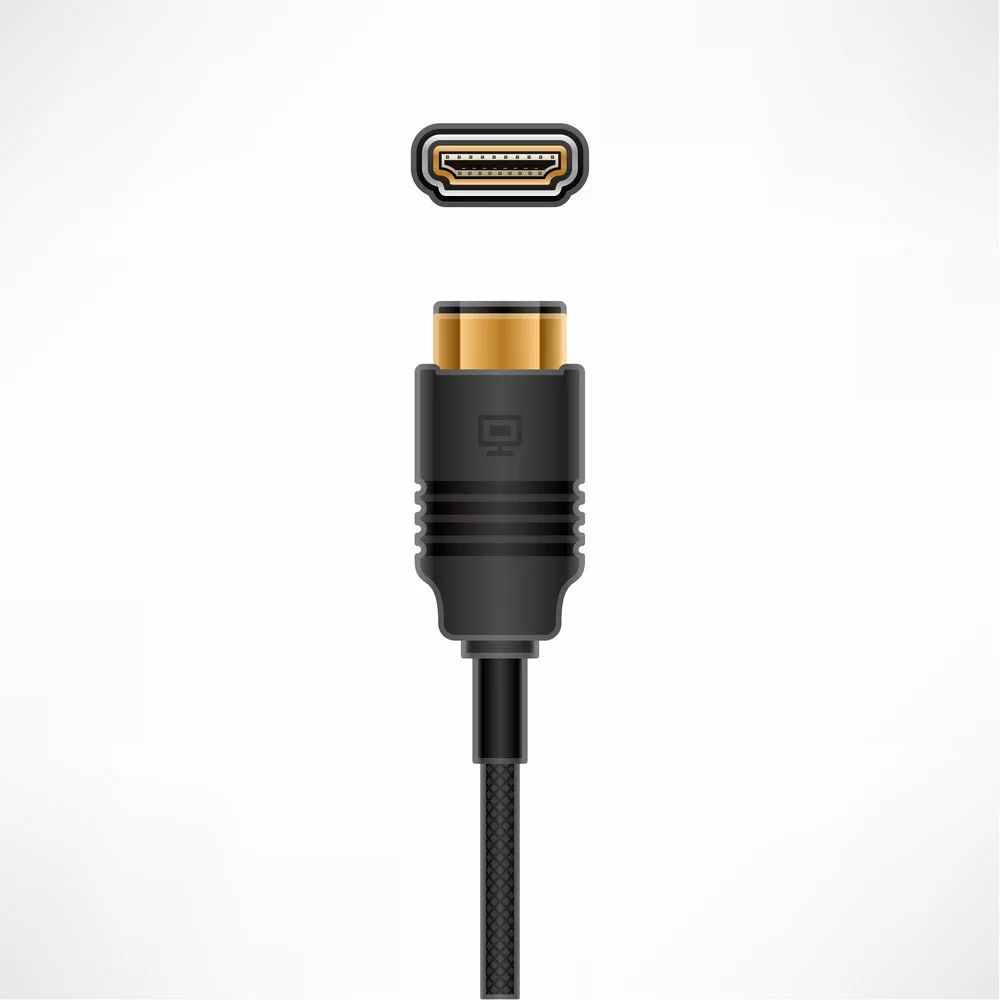There are several HDMI cable types with varying resolutions, refresh rates, frequencies, speeds, and other specs. That means they work differently, each suited for different needs. This article explains how to identify HDMI 2.1 cable.
Table of Contents
What are HDMI 2.1 cables?
Well, there’s no such thing as an HDMI 2.1 cable. The truth is that certain HDMI cable types work on Version 2.1 port.
Now, let’s differentiate the HDMI interface version from the HDMI cable type to know more about the “HDMI 2.1 cable”.
HDMI INTERFACE VERSION
For a device to have a version, it must have operating software or drivers. When the software gets updated, the device gets assigned a set of numbers corresponding to the release of the system.
Some examples of output HDMI interfaces are the ports on gaming consoles as well as the display device (TV or monitor).
The version of the interface is what determines its capabilities, including the resolution of the picture displayed, the refresh rates, and the data bandwidth.
For example, the 1.4 will transmit a 4K resolution at a refresh rate of 30Hz, while A 2.0 will transmit the same resolution at a refresh rate of 60Hz.

HDMI cable and corresponding port
It’s for this very reason that HDMI cables have a maximum transmission capacity.
The table below illustrates the version of the HDMI interface very clearly.
| Specification | Video | Audio Support | ||
| Max. Resolution @ Refresh Rate | Max. Transmission Rate(Gb/s) | HDR(Yes or NO) | ||
| HDMI 1.0 | 1080p @ 60 Hz | 4.95 | No | Eight audio channels |
| HDMI 1.1/1.2 | 1440p @ 30 Hz | 4.95 | No | One-Bit Audio;DVD-Audio |
| HDMI 1.3/1.4 | 4K @ 60 Hz | 10.2 | No | Dolby TrueHD;ARC; DTS-HD |
| HDMI 2.0 | 5K @ 30 Hz | 18.0 | Yes | HE-AAC;Thirty-audio channels; DRA, |
| HDMI 2.1 | 8K @ 30 Hz | 48.0 Gb/s | Yes | eARC |
HDMI cable type
HDMI cables don’t have drivers to be updated, so the term version cannot apply to them. HDMI cables are simply wires that transmit signals from one port to another. So, there are no HDMI 2.1 cables at all.
The key concept is an ever-increasing need for improved HDMI cables supporting bulk data transmission. They come certified as able to meet the performance needs of a particular HDMI port.
The table below shows the various HDMI cable classifications based on their performance standards.
| CABLE TYPE | HDMI VERSION Supported | USES |
| Standard HDMI Cable | 1.0 to 1.2a | Watch standard HDTV, Blue-ray DVDs and media streamers |
| High-Speed HDMI Cable | 1.3 to 1.4a | Enjoy Deep Color and 3D graphics |
| Premium High-Speed HDMI Cable | 2.0 a and b | Play video games with up to 30fps and use design software |
| Ultra High-Speed HDMI Cable | 2.1 | Play video games with over 30fps and leverage all HDR TV features |
Because all cables have backward capability, you can use an ultra-high-speed cable on a device with lower specifications.
How to determine if an HDMI cable supports version 2.1 features?
Generally, HDMI cables look the same, so you can’t differentiate them by just looking at them.
Also, they have no IC (integrated circuit) or controller, which rules out the possibility of using software to test them.
Still, here’s how you can tell if a cable is 2.1.
Check the Performance Specifications
You’ll find performance specifications either on the cable itself or the packaging.
Data Rate Specification
Data rate specification refers to the speed at which the cable can transmit data, usually indicated as Gbit/s, Gb/s, or Gbps.
An HDMI cable labeled as 48 Gbps is an ultra-high-speed cable with a 2.1 port.
Resolution and Refresh Rate
Another way to determine the type of HDMI cable is by checking the resolution and refresh rate indicated.
A cable marked 8K@30Hz offers ultra-high-speed working with a 2.1 port.
Performance Certification
HDMI.org is charged with certifying HDMI cables after testing for compliance with particular specifications.
Alternatively, you can scan the QR codes on the cable’s labeling.
By Trial and Error
If you have an old cable, you likely no longer have its packaging.
Undoubtedly, it would be best to have an ultra-high-speed cable to work with a 2.1 port. So, use your cable to connect to an 8K@30Hz TV or monitor and see if it works.
Conclusion
As we’ve established, there’s a distinct difference between the HDMI interface and the cable type. And now you know how to determine if your cable can support HDMI 2.1.
For any help regarding cables, contact Cloom, which manufactures various cable assemblies and wiring harnesses.
